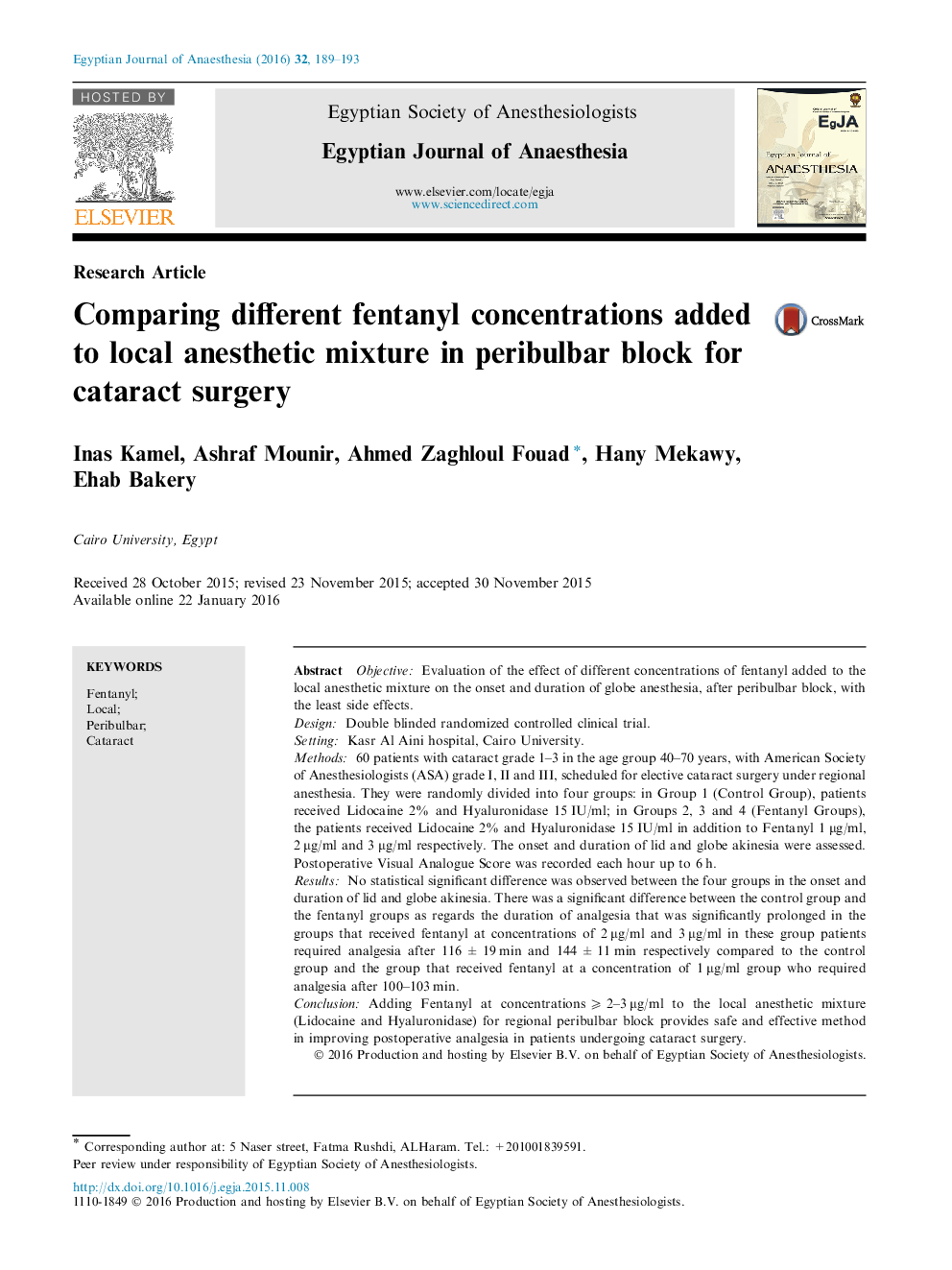| Article ID | Journal | Published Year | Pages | File Type |
|---|---|---|---|---|
| 2756147 | Egyptian Journal of Anaesthesia | 2016 | 5 Pages |
ObjectiveEvaluation of the effect of different concentrations of fentanyl added to the local anesthetic mixture on the onset and duration of globe anesthesia, after peribulbar block, with the least side effects.DesignDouble blinded randomized controlled clinical trial.SettingKasr Al Aini hospital, Cairo University.Methods60 patients with cataract grade 1–3 in the age group 40–70 years, with American Society of Anesthesiologists (ASA) grade I, II and III, scheduled for elective cataract surgery under regional anesthesia. They were randomly divided into four groups: in Group 1 (Control Group), patients received Lidocaine 2% and Hyaluronidase 15 IU/ml; in Groups 2, 3 and 4 (Fentanyl Groups), the patients received Lidocaine 2% and Hyaluronidase 15 IU/ml in addition to Fentanyl 1 μg/ml, 2 μg/ml and 3 μg/ml respectively. The onset and duration of lid and globe akinesia were assessed. Postoperative Visual Analogue Score was recorded each hour up to 6 h.ResultsNo statistical significant difference was observed between the four groups in the onset and duration of lid and globe akinesia. There was a significant difference between the control group and the fentanyl groups as regards the duration of analgesia that was significantly prolonged in the groups that received fentanyl at concentrations of 2 μg/ml and 3 μg/ml in these group patients required analgesia after 116 ± 19 min and 144 ± 11 min respectively compared to the control group and the group that received fentanyl at a concentration of 1 μg/ml group who required analgesia after 100–103 min.ConclusionAdding Fentanyl at concentrations ⩾ 2–3 μg/ml to the local anesthetic mixture (Lidocaine and Hyaluronidase) for regional peribulbar block provides safe and effective method in improving postoperative analgesia in patients undergoing cataract surgery.
